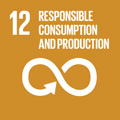- Docente: Maria Semi
- Credits: 6
- Language: Italian
- Teaching Mode: Traditional lectures
- Campus: Bologna
- Corso: First cycle degree programme (L) in Drama, Art and Music Studies (cod. 5821)
-
from Mar 19, 2024 to Apr 24, 2024
Learning outcomes
By the end of the laboratory the student: is able to use some of the concepts he/she came in contact with, by applying them to specific contexts and experiences; by select reading he/she has some knowledge of the discipline-specific vocabulary and is able to use it in his/her written assignment.
Course contents
The laboratory aims at increasing the students' awareness about the uses of music in contemporary society. A relevant part of the lessons will be devoted to the presentation of case studies by the students.
The students who do not attend the classes will be requested to draft a final paper that will address one of the topics dealt with in the assigned readings.
Readings/Bibliography
- Elisabetta di Stefano, Che cos’è l’estetica quotidiana? (Carocci 2017, 2019)
- Paesaggi sonori. Musica, voci, rumori: l’universo dell’ascolto, ed. by Michael Bull and Les Back, Milano, il Saggiatore, 2008, pp. 195-247 (Parte Quarta: Suoni della città) [international students may also use the original English version].
- Elementi per un’estetica del contemporaneo, a cura di G. Matteucci, pp. 5-21 (introduzione); pp. 39-53 (Piacere, Autonomia); pp. 82-95 (Opera, Artista); pp. 123-129 (Suono); pp. 164-179 (Spazi di consumo, Tempo libero) [freely accessible for Unibo users from the collections AlmaRE]
- Barry Truaux, “Modelli e strategie per il design acustico”, in A. Mayr, Musica e suoni dell’ambiente, Bologna, CLUEB, 2001, pp. 27-40 [freely accessible for Unibo users from the collections AlmaRE]
- Additional material uploaded in Virtuale.
Teaching methods
Individual and group communications, guided by a former coaching work by the teacher
Assessment methods
ATTENDING STUDENTS
Students can choose between an oral communication (individual or group presentation) of a concrete case study to be formerly agreed with the teacher or a paper assignment (see below).
NON ATTENDING STUDENTS
Paper assignment (max 2000 words, A4, single-spaced, Times New Roman 12) either on a topic related to the assigned readings, or on a more specific case-study (to be agreed with the teacher)
Teaching tools
Audio, video, materials shared on Virtuale
Office hours
See the website of Maria Semi
SDGs




This teaching activity contributes to the achievement of the Sustainable Development Goals of the UN 2030 Agenda.
